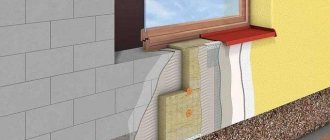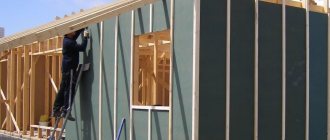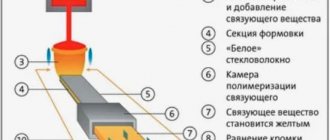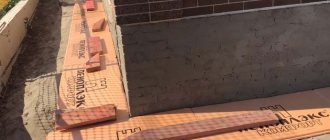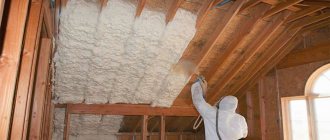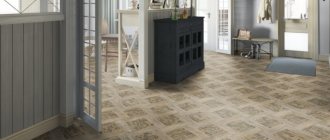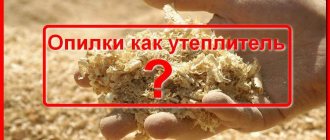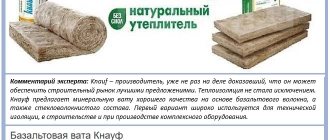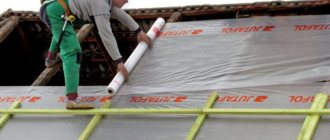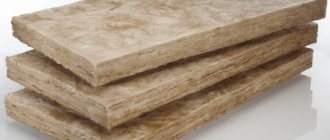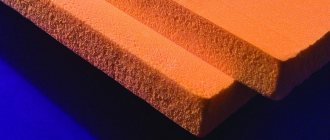Warmth is a prerequisite for comfort in the home. There are many ways to heat a room. But it is important that the heat is distributed evenly throughout the volume. And it’s very unpleasant if your head is hot and your feet are cold. It is known from the laws of physics that warm air rises from bottom to top. To effectively heat a floor, the heat source must either be under the floor or be part of the floor structure. And such options exist. You just need to remember how they made warm floors in village houses.
Sweet drinks
Sugar in any product is a very bad sign. However, some sources of sugar are worse than others, with sugary drinks being particularly treacherous. The fact is that when we drink, the brain does not register this process as “eating.” That is, even if you drink one liter of soda with sugar at a time, and still get your daily calorie intake, you will still not refuse to eat, because you will not feel hungry.
Also, when consumed in large quantities, sugar can cause insulin resistance (increased plasma insulin concentrations) and contribute to the development of non-alcoholic fatty liver disease, type 2 diabetes and heart disease.
What to drink instead?
The best option is water. However, scientists say that tea and coffee (without added sugar) can also be an excellent substitute. If you want a cold drink, buy sparkling water and add a squeeze of lemon to it.
History of gender
Encyclopedia mapEvery thing surrounding a person changed and developed along with him. Housing is no exception - from the tents of primitive people, made of whale bones, to modern skyscrapers, the road was winding and long. Each part of the building has gone through its own special path. Let's take such a simple and obvious object as an ordinary floor. Its history is no less interesting and mysterious than that of ancient fossils.
Many experts in ancient history today claim that our distant ancestors almost did not live in caves (according to some sources, there are only about 5% of residential buildings). And if they stopped there, it was only for a short time to wait out the bad weather.
However, residential caves still existed. As a rule, these were very large natural formations, inside of which several tents or something like an Indian wigwam could be placed. Such are the caves of Fourneau-du-Diable and Chanelle-aux-Saints in France. Serious landscaping work has been undertaken there, the living area is fenced with limestone fences, and the floors are carefully leveled and cleared of stones. In the center of the settlement, the ancient people built a recess for the hearth. Prehistoric engineers were able to create an ingenious drainage system by constructing ditches and slopes. Thanks to her, the floors of the cave settlement always remained dry.
Much more often our ancestors built sleeping pits - a prototype of a dugout. A small depression in the ground with an installed canopy of branches and skins served as a completely acceptable shelter for ancient people, who rarely stayed in one place for long. The excavation was carefully trampled down, sometimes even coated with clay. On top, apparently, bundles of grass or brushwood were laid, which were covered with skins. It turned out to be a convenient overnight place for several people, for example, a family group.
As culture further developed, humanity divided into nomads and farmers. For the former, the most important was mobility, caused by the need to follow the herds: their houses were and remain variants of primitive tents. Over centuries of evolution, they have turned into functional and cozy dwellings, such as yurts and tents. Floors have also undergone a transformation; they have become mobile: until now, for example, the tents of the Nangasan people (Taimyr) are equipped with collapsible plank floors that are transported on sleds. When assembled, they are covered with sewn fur blankets.
We owe the emergence of carpet weaving to nomadic cultures. Such coverings, warm and beautiful, are good because they can be rolled up and taken away at any time. However, carpets - these floors of nomads - have gone through a gigantic path of evolution.
Farmers who learned to grow grain crops did not need mobility. They devoted a lot of time to arranging and decorating their homes. It is unknown who first thought of covering floors with flat stone. But already in Ancient Egypt, the skill of stonemasons reached an amazing height: they were able to make polished slabs of rare beauty and precision from very durable and difficult to process basalt. And the inhabitants of Mesopotamia, where there was an abundance of high-quality clay, already learned how to make baked bricks several thousand years ago. The ancient Sumerians mastered the production of glazed tiles, which they used to pave floors. Moreover, about 5 thousand years ago in Babylon they already knew how to make facing ceramics similar to modern ones.
The Romans made a real breakthrough in the evolution of sex when they invented cement. This innovation made it possible to build strong, durable and at the same time easy to construct houses. At first, however, the stern descendants of Aeneas did not think about the beauty of the interior. Back in the 4th and 3rd centuries BC. the floors in the central part of the house - the atrium - were simply made of a thick layer of cement mixed with broken bricks, tiles, small crushed stone and shells.
Already at the end of the second century BC. the Roman floor turned into an important interior detail, testifying to the wealth of its owner. It was covered with carefully fitted colored stones and marble slabs that made up a complex ornament. Another popular technique was to press small pieces of multi-colored marble into thick cement mortar, creating grandiose panels. Such mosaics were found not only in Rome or Pompeii, but also in remote colonies of England or North Africa.
Roman floors were distinguished not only by their beauty, but also by their manufacturability. The Roman Sergius Orata, who became famous at the beginning of the 1st century BC. refinement and luxury, he came up with the idea of building a bathhouse over the hypocaust, i.e. the basement where the furnaces were located. Clay pipes ran from there, communicating with the hearth - the floor was warm.
It must be said that it was the remains of the baths that brought to us all the beauty of Roman floors. The rich empire did not spare money on them and made them conscientiously.
The fashion for mosaic panels led the Romans to create... portable floors (which would probably have surprised the nomads). According to the memoirs of contemporaries, the great Julius Caesar himself ordered that mosaics be carried with him on military campaigns in order to cover his tent with them.
In countries rich in forests, parquet has undergone a similar evolution. Starting with unplaned boards, by the Renaissance it turned into the most complex and expensive inlaid surfaces, including not only precious woods, but also mother-of-pearl and gems.
This was the case in Russia, where carpentry art became fundamental to life from ancient times. Three-century-old huts have still been preserved, where the floor boards are amazing in their precision of fit and quality of processing. And this despite the fact that everything was done with an axe. By the way, not because there were no drinks – there were, and different ones. Simply cutting wood with a splitter allows it to “diverge” along the most optimal trajectory. Boards obtained using this technology warped less when drying, were easier to fit, and were almost resistant to rotting. This is how they cut down peasant huts, and boyar and royal chambers. At first, people did not live in stone mansions at all; they were either official or religious premises. Only after Ivan the Terrible did buildings made of stone and brick, and therefore tile and majolica floors, similar to those in southern Europe, begin to conquer Russian cities.
The 19th century was marked not only by the victory of the industrial method of production, but also by the success of chemistry. The discovery of new materials made it possible to change traditional construction technologies. This directly affected the floors as well.
The first sign of new times can be called the invention of linoleum. Strictly speaking, flooring made from a mixture of resin, resin, dye, wax and linseed oil, applied hot to a fabric base, was invented back in 1763. However, it was unstable and stained. Only a hundred years later, when the British manufacturer Frederick Walton developed a cheap technology for the production of oxidized linseed oil, or linoxin, did durable and inexpensive linoleum appear. Today, this coating is experiencing a real renaissance - due to its naturalness - and is in demand in a variety of areas of life. For example, the Forbo company, which today produces about 60% of all linoleum in the world, has developed a specific product for offices. This brand of coating has low electrical resistance, which reduces the level of static electricity, which is dangerous for electronic equipment. There is also a version of linoleum for sports facilities - it is more elastic and resistant to damage than the standard one.
The mosaic covering has undergone the most impressive metamorphoses. The floor, which is not inferior in strength to granite and in beauty to Florentine mosaics, has become accessible to almost everyone. This happened after the development of technology for creating porcelain stoneware - actually a type of ceramic tile, but practically a new material with hitherto unprecedented properties.
The main difference between porcelain stoneware and conventional ceramic tiles is the uniformity of the composition. There is no division into a base and a layer of glaze, although some types are still covered with it to achieve a special decorative effect. In addition, unlike other ceramics, only white clays are suitable for porcelain granite. It is they that make it possible to acquire, when sintered with other components, a unique property - water absorption, close to zero, similar to and even higher than durable natural stone.
Porcelain tiles are a product of high technology. It is produced at very high pressure (at least 500 kg per cm2), which guarantees the absence of pores and voids. The material is fired at extreme temperatures (in the hottest zone of the furnace it reaches 1205°C). This makes it possible to achieve the formation of a monolith whose technical characteristics are superior, as already mentioned, even to natural rocks (tensile strength of ceramic granite is 600 kg per cm2 versus 350 kg for conventional tiles). And in addition to durability, it is also very beautiful - again thanks to new technologies.
With DryPress technology, the design is applied to the tile using dry colored powders before pressing. This approach allows you to decorate a structure of any depth and complexity. The result is an interesting, durable and beautiful material, which is used both in cladding and in places with high loads, for example, in large shopping centers.
The list of new materials is growing all the time. Glass floors are becoming increasingly popular. To do this, large plates of special tempered glass are used, assembled using triplex technology, that is, glued together with a special polymer composition. The thickness of such a structure can reach up to ten centimeters, and the strength is comparable to steel. Glass floors are in demand both in public places (for example, observation decks on skyscrapers and television towers are made this way) and in private apartments, especially those designed in hi-tech style.
The pinnacle of evolution can be considered an “intelligent” floor controlled by a “smart home” computer. It can not only change the temperature, becoming warmer or colder, but also color and even texture.
Without a reliable foundation, human habitation is unthinkable. And wherever evolution takes us, as long as people need a cozy home, its main components, including the floor, will continue to improve.
In preparing the article, materials from the press service of the Kerama Marazzi Group were used
Most fruit juices
Alas, juices also fall into the category of “harmful products,” again due to the amount of sugar that manufacturers generously add to their drinks. Almost all supermarket juices contain as much sugar as Coca-Cola or Pepsi soda.
Should I give up juices completely?
Don't forget that you can always drink freshly squeezed juice (but don't overdo it). It has also been shown that some fruit juices may have health benefits despite their sugar content, such as pomegranate and blueberry juice.
Methods
The easiest way
to insulate with clay begins with covering the ceiling with boards. Their minimum thickness should be 4 cm, but it is better if it is 6 cm. Before carrying out work, the boards must be thoroughly dried. In no case should you paint or varnish boards, because many paints and varnishes are simply not adapted to high temperatures and, under its influence, can begin to release toxic resins and polyesters into the space.
In general , it is better not to use chemicals in the bathhouse.
, unless you intend to constantly inhale its destructive fumes.
After completing the sheathing, you must carefully and carefully cover the gaps between the boards with clay and wait for it to dry completely.
The next stage begins with preparing a mixture of sand and clay, which should be quite thick. All boards laid on the ceiling are covered with this mixture. The thickness of the layer should be at least 5-7 cm. Next, you should wait until the layer is completely dry, and this can take quite a lot of time. A thick layer of sand is laid on the dried clay.
Then the ceiling is impregnated first with liquid steam and then with dry steam. The clay, accordingly, first gets wet, and then finally dries and acquires the ability to retain the heat of your bath for many years.
To ensure that the insulated ceiling retains its heat-insulating properties for as long as possible
, there must be ventilation in the attic. The simplest and at the same time reliable way to create ventilation is two windows opposite each other.
Another way
consists of insulation with several layers of clay with intermediate layers of sawdust or expanded clay. In order to prepare the clay, it is slightly moistened and thoroughly mixed with straw until smooth. The straw is pre-chopped. The final consistency should be similar to soft plasticine or mortar, which is used in laying brick walls.
The clay layer will again be 5-8 cm. After application, it must be carefully smoothed. Seal the perimeter of the ceiling requires special care. The clay will dry in 20-30 days, provided that the outside temperature is above zero. After drying, cracks may appear. This is normal. You can apply another thinner clay layer to the cracks, and cover it with sawdust, expanded clay or wood chips on top.
Insulating foundations prolongs their life for a long time, since it reduces the impact of negative temperatures, and waterproof insulation also acts as waterproofing. It so happens that in some houses the floors are warm all winter without any heating, in others they are cold, despite a fair layer of thermal insulation underneath. Practice shows that insulating foundations helps solve this issue. The temperature in the underground is much higher than outside, and the floors cool more slowly.
fried food
Pan-frying and grilling are the unhealthiest cooking methods. Firstly, this process often involves a huge amount of oil, which greatly increases the calorie content. Secondly, cooking food over high heat produces several types of harmful chemical compounds.
These include acrylamides, acrolein, heterocyclic amines, oxysterols, polycyclic aromatic hydrocarbons (PAHs) and many others! Many of these compounds have been linked to an increased risk of cancer and heart disease.
How to cook?
It is best to choose milder food processing methods: boiling, stewing, blanching and steaming.
How to insulate wooden floors
There are a lot of materials that allow you to do this. And they are quite accessible and widespread. Take Sakhalin, Belgorod, for example, the insulation of the floor of a wooden house can be done with the same materials. They can be of different types, for example, rolled, sheet or loose. There is no point in listing everything, but the most famous and widely used are listed below.
Wood sawdust
An undoubted advantage is their low cost, but their use is possible after special training:
- they must be well dried, which requires keeping the source material in a dry room for at least a year:
- The sawdust must be treated with slaked lime to prevent mice from infesting there.
Expanded clay
The material is strong, porous and durable, but a significant drawback is that it is hygroscopic. So when using it, protection from moisture is required. Due to the relatively high thermal conductivity compared to other materials, it is necessary to create a thicker layer of insulation.
Mineral wool
This general name often hides several different materials:
- basalt (stone) wool. The raw materials are rocks and have good thermal insulation characteristics;
- glass wool Does not emit harmful substances, suitable for noise and thermal insulation. Waterproofing is mandatory; if glass wool gets wet, it loses its properties.
The use of any mineral wool must provide protection against rodents.
Styrofoam
Absolutely resistant to moisture. To provide the required thermal protection, a layer of thinner thickness is needed than when using sawdust and expanded clay. It is lightweight and easy to install. But the material is fragile and needs protection from mechanical stress. In addition, rodents often live in it.
Penoplex or extruded polystyrene
It is made from the same material as foam, but using a different technology. Nowadays penoplex is the most popular insulation material. Has improved characteristics.
Here is only a brief description of some materials widely used for floor insulation. However, even this simplified description makes it possible to understand what they are and what they must correspond to.
Baked goods, cookies and cakes
The main problem with these sweets is that they are high in calories (and certainly delicious), but have almost no beneficial nutrients.
Sugar, refined wheat flour, trans fats (which cannot be processed by the body) and many, many preservatives (if we are talking about store-bought ones). Such food contributes to obesity and deficiency of beneficial microelements; eating it is absolutely useless.
What to do if you want something sweet?
If you can't resist dessert, try Greek yogurt, fresh fruit, or dark chocolate.
Insulation with other materials
In earlier times, wood was usually used for construction. construction of the house had to be ensured:
- multi-layer attic floor;
- installation of double window frames.
Cotton wool was used to insulate the windows. The most common method of thermal insulation was the use of hay or straw. The material was folded
To protect the house from the outside, woodpiles were made. There was a double calculation here. Logs were needed to heat the stove; in addition, they acted as an insulating barrier to allow cold air to pass through. Turf was also often used.
French fries and chips
Even though many people believe that potatoes are evil, fresh white potatoes are actually quite healthy. However, the same cannot be said about French fries and chips. These foods are incredibly high in calories and come in very small portions! They can easily be eaten in excessive quantities without even noticing. Many studies suggest that these foods are the cause of obesity in many countries.
These foods may also contain high levels of acrylamides, which are carcinogens produced when potatoes are fried or baked.
What to do?
It is better to eat potatoes boiled rather than fried. If you want a snack or crunch, choose nuts or carrots.
Why do you need insulation?
Before we find out how to insulate the ceiling of a private house, let’s understand why, exactly, we are doing this? It’s always nice to understand the motivation for your actions, isn’t it?!
What do people generally do when they realize that the house is cold? First, they insulate/seal the windows or change the frames to double-glazed windows, cover the floor with something woolen, complain about the cold walls, and only then think about the correct construction of the roof. And you should think about this even before the completion of construction or renovation, since the greatest heat losses occur right above your head, and you have no idea. According to the laws of physics, heated air always tends upward, and cold air always tends downward. By poorly insulating your roof, you are simply heating the universe, not your home.
Owners of their own homes are very lucky. If apartment owners are deprived of the opportunity to carry out global insulation, limiting themselves only to the internal lining of the ceiling, then homeowners have every chance to live in comfort. How to properly insulate the ceiling in a private house so that the work is not done in vain?
Low calorie yogurt
Yogurt can be a very healthy food, but unfortunately most supermarket options are not. One of the popular products in stores is low-calorie yogurt, which is low in fat but high in sugar! Manufacturers go to such lengths to compensate for the taste that fat provides. In addition, many yogurts do not contain probiotic bacteria, as is commonly believed. They are usually pasteurized, which kills most bacteria.
How to choose yogurt?
It is better to stick to regular full-fat yogurt without sugar or any flavoring additives.
How the floor was insulated in ancient Rome
In Ancient Rome, a special hypocaust system was used to insulate the floor. I saw her in person on a tour when I was there a few years ago. And I can say that she looks impressive.
The hypocaust was set up quite simply: the stove was installed outside, and the smoke from it was driven through special air channels in the floor. Thus, the stone slabs were heated, providing warmth to the entire room.
It is the hypocaust that is considered the progenitor of modern heated floors.
Not everyone in ancient Rome could afford such warm floors. They were considered a luxury because they required a lot of wood to light the stoves.
Only the homes of wealthy people, politicians, and successful traders were heated using hypocaust.
Ice cream
And ice cream is on the list of harmful foods! Many doctors note that now that there is so much choice, more and more sugar is being added to this product. It is also very high in calories and easy to overeat.
What should I do?
You shouldn’t deny yourself the pleasure of eating ice cream, but you should choose the simplest options with the minimum amount of additives.
Specifics of bathhouse ceiling thermal insulation
Having finally decided on the choice of how to insulate the ceiling in the bathhouse, you can proceed directly to insulation. But first you still need to figure out how to properly insulate the ceiling in a bathhouse. The specificity of bath rooms is such that for high-quality thermal insulation, in addition to the insulation itself, it is necessary to equip two more layers: vapor barrier and waterproofing. These two layers are necessary to protect the thermal insulator from getting wet, thereby maintaining its thermal insulation characteristics and protecting it from mold.
Processed meat
Nutritionists advise not to ignore meat in your diet and sometimes eat lean types of unprocessed meat. However, such a recommendation can hardly be heard about sausages, bacon, frankfurters and other deli meats.
Research shows that people who eat processed meat have a higher risk of serious diseases, including colon cancer, type 2 diabetes and heart disease.
What if you really want to?
Today, many farms make their own bacon and sausages. If such activity is not very common in your region, then you should avoid processed meat completely.
Ceiling insulation options
There are 2 options for how to insulate the ceiling in a bathhouse with your own hands. It is preferable to arrange the so-called External insulation is both more practical and easier to implement.
But such insulation has one drawback - it will be impossible to move along the ceiling. Internal insulation of the ceiling is practiced in small lean-to bathhouses, where it is not possible to put a layer of insulation on top of the ceiling, or to ensure the ability to move along the ceiling.
The ceiling of the bathhouse, before insulation, must be thoroughly cleaned of dirt. If damage to the ceiling structure is discovered during cleaning, it must be repaired. You also need to additionally treat it with antiseptics and fire retardants, if such treatment was not carried out when installing the ceiling.
Processed cheese
In moderation, cheese can be very beneficial. A small piece of this product is full of nutrients! However, processed cheese products are nothing like regular cheese. Basically, they are made from masses (a substance high in emulsifiers, vegetable oils, sodium, food coloring, preservatives and sugar) that have nothing in common with cheese, but only resemble its appearance and texture.
How to choose?
Always read the ingredients, but it's worth noting that processed cheese is almost never healthy. It's better to eat the real thing. Feta, mozzarella and curd cheeses are especially useful.
Modern insulation of foundations
Technologies have come a long way, but even now foundation insulation is in great demand. Moreover, the space inside the foundation is often used for technical and even residential premises. Often the boiler room, sauna and other rooms are located in the basement. Cold, uninsulated walls (aka the foundation of the house) are unacceptable in such rooms - condensation will constantly accumulate, fungus will form, etc.
Experts advise using Penoplex insulation to insulate foundations. The slabs are easily mounted on a ready-made foundation, do not absorb or conduct moisture, and are resistant to damage by biological organisms. Environmentally friendly and durable material.
Insulation slabs are attached to the surface of the foundation using bitumen-based adhesives that do not contain solvents. In fact, glue will be needed only until the moment of filling with soil. Backfilling is done in layers, with compaction.
High calorie coffee drinks
Coffee is rich in antioxidants and has many beneficial properties. Coffee drinkers have a lower risk of serious diseases such as type 2 diabetes and Parkinson's disease. But the popularity of this drink played a cruel joke on him!
A huge number of coffee shops, which are increasing every year, offer more and more interesting options for coffee cocktails due to competition. Cream, syrup, sprinkles, sugar turn coffee into a real bomb. These drinks can be sweeter than a glass of soda.
What kind of coffee should you drink?
Black coffee is ideal. If you want a milder taste, don't be afraid to add a little milk to it.
Secrets of insulation: the experience of older generations
Our ancestors also knew that the best insulation is air, naturally, “properly packaged.” Therefore, in the old days, they acted wisely by erecting a gable roof on buildings and leaving the attic cold. This roof format allows it to accumulate a certain amount of snow, which becomes insulation. With the correct implementation of this idea, you will be able to achieve zero temperature in the attic when the temperature outside is as low as -25 degrees.
What's the trick? This is where one of nature's best insulators comes into play - trapped air in the attic. By the way, it can be controlled depending on the time of year by closing or opening the windows installed in the gables. Naturally, to be on the safe side, the attic floor was covered with bulk insulation materials, for example, sawdust, sand, and earth. With this technology, inside the hut even in the most severe frosts it was at least +20 degrees. Well, now you know how to insulate a wooden ceiling in a private house without any costs, however, you will have to think about it even before the start of construction, adding the construction of a gable roof to the work plan. But let's look at modern insulation techniques.
This is important to know! If you suddenly decide, adhering to the technology described above, to improve it and insulate the roof slopes, then you will bitterly regret it. The snow will not stay on the roof, but will begin to melt and flow off, turning into huge icicles. In addition, it will be difficult for you to reach the roof covering if repairs are necessary.
Heavily processed foods
The main difference between such products is that their composition is “modified” at the production stage. Ingredients that shorten the shelf life are removed and those that help keep it fresh longer are added.
Such food contains a lot of salt and sugar, trans fats (which our body cannot digest), and little fiber and micronutrients. As a result, such food leads to weight gain, type 2 diabetes and increases the risk of premature death by 26%.
What should I do?
When you shop, be sure to read the labels on food packages. Always choose whole foods over processed foods.
How were wooden houses insulated in Rus', what insulation methods did our ancestors use?
Insulating the walls of a wooden house is not at all a prerogative of the 20th-21st centuries, associated with attempts to save on heating and create a comfortable climate in residential premises. Our ancestors have been effectively insulating their homes since time immemorial - at first they hung animal skins on the walls, and somewhat later the question of how to insulate a wooden house was solved by decorating the walls with fabric, wood or frescoes. At the same time, these materials served as decorative decorations for interior spaces, and floor insulation in a wooden house was first provided by the same skins, clay coating or, in later times, wicker rugs and carpets in the houses of wealthy villagers.
However, measures to conserve thermal energy in the house began to be taken even at the stage of laying the walls. The main material for construction was logs harvested in the forest, while at the same time moss was harvested there, which served as an excellent heat insulator and made it possible to insulate the house at minimal cost during the construction process. The ceiling was made in the form of a multi-layer structure, the window frames were made small and, moreover, double. Somewhat later, internal thermal insulation of premises began to be ensured by plastering the walls.
The climatic conditions of Russia forced us to find alternative ways to insulate homes. Hay and straw prepared for feeding domestic animals were stored in attics, woodpiles were laid out along the walls outside, backfill heaps were placed around the perimeter of the house, and windows were covered with straw mats. Turf was used as a roof, which is an excellent natural heat insulator. On the scale of settlements, developments were planned according to the wind rose, and window and door openings were not cut into the walls of houses facing north and northwest.
Houses made of strong oak logs, which were the main building material in the recent past, were insulated from the outside with some semblance of a modern multi-layer external facade. First, the outer walls were coated with a mixture of clay and chopped straw, which served as an analogue of modern insulation materials. Then the insulating layer was protected from the effects of rain, snow and wind by galvanized metal. This prototype of modern metal siding was obtained by dismantling failed galvanized troughs. According to eyewitnesses, the service life of such a “thermos” could be up to half a century. The cost of insulating a house using this method was minimal and was reduced to the cost of scrap metal.
One example of heat-saving technologies of the late 18th – early 19th centuries is the description of the so-called “wattle fence” in the house - at a distance of about a meter from the rubble, a half-meter-high fence was laid out along all four walls of the room. It was coated with clay on the outside, and one corner facing the stove was left open. This structure served as a kind of reflector, designed to direct thermal energy under the floor and store it there. Thus, the heat was retained inside the hut, making the floors warm without any special tricks and using only natural materials - flexible rods, clay, sand and straw. The constant heating of the Russian stove led to a gradual heating of the foundation, as a result of which it began to give off excess heat into the room.
Over time, the planning of residential buildings became more complicated, intermediate spaces appeared between the entrance and interior rooms - vestibules, and enclosed verandas began to be built in many houses. Already in the 21st century, a modern environmentally friendly material called “ecowool” began to be used as insulation, applied to the walls of buildings and making it possible to insulate a frame house and any other types of buildings, as well as provide thermal insulation for the roof of a modern house.
When you place an order for insulation of the roof, walls and attics of buildings, as well as floor insulation in a building, in a short time you will have the opportunity to move into a warm house with reliable steam and waterproofing, which guarantees a long service life between repairs.
Our contact number is 2, you can also use the “Order a call” form on the website pages.
Laziness.
Laziness in the deft hands of a manipulator is also an extremely effective means for covertly controlling people. Although laziness, as well as the next weakness on this list - stupidity, inherent in some people, are rather concomitant factors for successfully manipulating you, they simply cannot be ignored here.
They need to be singled out, if only because it is people who are prone to laziness and stupidity that can be convinced of anything and forced to behave in any way, spending a minimum of effort in hidden management.
Laziness prevents you from double-checking the installed settings, for example, pressing a couple of keys on the keyboard and clicking the mouse to get acquainted with an alternative point of view, or facts that contradict the opinion of the manipulator, and stupidity does not allow you to correctly reject unnecessary facts.
A lazy person, in principle, can even work tirelessly for the manipulator if he does not understand the goals set by the hidden control.
As a result, we have the fact that the stupider and lazier a person is, the more employable and promising he is as a slave to a manipulator.
Therefore, of course, getting rid of the influence of hidden control for a lazy and stupid person is his mental development in various areas, and daily work on self-improvement.
